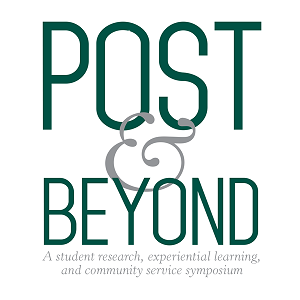An In Vivo-Simulated Vaccine to Prevent Bovine Respiratory and Other Diseases due to Histophilus somni
Faculty Mentor
Thomas J. Inzana
Area of Research
Microbiology/Bacteriology
Major
Veterinary Medicine
Description
Objectives: We propose that current vaccines to prevent bovine diseases due to Histophilus somni are inadequate because antigens expressed by host bacteria differ from culture-grown cells used for vaccine manufacture. The natural growth state of H. somni is a biofilm, which is prevalent during chronic infection. Furthermore, half of the bacterial genome is differentially expressed when the bacteria form a biofilm, compared planktonic growth. Iron binding proteins expressed by bacteria in the host that are not expressed in rich culture medium, and antibodies to such proteins may reduce bacterial growth in vivo. Our current objectives are to develop a vaccine that will mimic the antigenic profile of the bacterium in the host and combine the vaccine with a novel adjuvant designed to induce a more protective immune response with less inflammation. Methods: ivOMVs were prepared by growing bacteria in broth medium, then adding EDDHA (ethylenediamine-N,N’-bis((2-hydroxyphenyl)acetic acid) to sequester free iron. After 5 hours incubation, cells were removed by low-speed centrifugation, and the OMV was recovered by ultracentrifugation of the filtered supernatant. BM was obtained from biofilm cultures that were grown for 5 days in a 1 L flask. The bottom 70 mls of biofilm was recovered, vortexed, and bacterial cells removed by low-speed centrifugation. The supernatant was pelleted at 30,000 x g for 15 min, and resuspended in phosphate buffered saline. The adjuvant BECC438 was added. Two groups of calves were immunized with two different doses of ivOMV-BM intramuscularly Sera and plasma samples were collected before immunization and weekly thereafter. Conclusions: Preliminary results indicated that the ivOMV-BM vaccine is immunogenic, though a stronger response to OMV than BM was noted. BM, particularly the galactomannan exopolysaccharide, may inhibit the immune response to protein antigens. Additional immunogenicity tests will be used to confirm the optimal vaccine dose before challenge and efficacy studies.
An In Vivo-Simulated Vaccine to Prevent Bovine Respiratory and Other Diseases due to Histophilus somni
Objectives: We propose that current vaccines to prevent bovine diseases due to Histophilus somni are inadequate because antigens expressed by host bacteria differ from culture-grown cells used for vaccine manufacture. The natural growth state of H. somni is a biofilm, which is prevalent during chronic infection. Furthermore, half of the bacterial genome is differentially expressed when the bacteria form a biofilm, compared planktonic growth. Iron binding proteins expressed by bacteria in the host that are not expressed in rich culture medium, and antibodies to such proteins may reduce bacterial growth in vivo. Our current objectives are to develop a vaccine that will mimic the antigenic profile of the bacterium in the host and combine the vaccine with a novel adjuvant designed to induce a more protective immune response with less inflammation. Methods: ivOMVs were prepared by growing bacteria in broth medium, then adding EDDHA (ethylenediamine-N,N’-bis((2-hydroxyphenyl)acetic acid) to sequester free iron. After 5 hours incubation, cells were removed by low-speed centrifugation, and the OMV was recovered by ultracentrifugation of the filtered supernatant. BM was obtained from biofilm cultures that were grown for 5 days in a 1 L flask. The bottom 70 mls of biofilm was recovered, vortexed, and bacterial cells removed by low-speed centrifugation. The supernatant was pelleted at 30,000 x g for 15 min, and resuspended in phosphate buffered saline. The adjuvant BECC438 was added. Two groups of calves were immunized with two different doses of ivOMV-BM intramuscularly Sera and plasma samples were collected before immunization and weekly thereafter. Conclusions: Preliminary results indicated that the ivOMV-BM vaccine is immunogenic, though a stronger response to OMV than BM was noted. BM, particularly the galactomannan exopolysaccharide, may inhibit the immune response to protein antigens. Additional immunogenicity tests will be used to confirm the optimal vaccine dose before challenge and efficacy studies.

